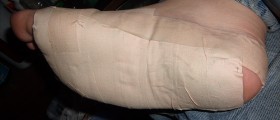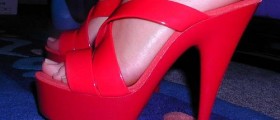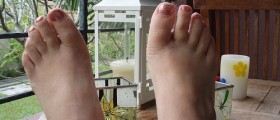
This condition is quite a common one inthe world of athletes more specifically weight lifters and gymnasts. Also, peoplewho are involved in some kind of a racket sports are quite prone toinjuring their feet, causing their heels to get bruised. Bruisedheels mainly take place due to a direct injury inflicted by your feetreceiving the whole impact from striking the ground. Therefore, eventhough our heels, being sensitive as they are, are covered in a thicklayer of fat, still, after continuously exposing them to physicalinjury, the soft tissue behind them gets hurt, causing pain anddiscomfort, interfering greatly with everyday activities and one'soverall mobility.
Reasons behind Bruised Heel andPossible Manifestations
One of many different conditions whichmight cause bruised feet directly is plantar fasciitis. Here, theligament which connects our calves with our heels starts beinginflamed, causing bruised heel to take place subsequently. Anotherunderlying condition capable of causing bruised heel is bursitis.This problem manifests through the inflammation of a small sack offluids which is located between the heel bone and the above mentionedlayer of fat. Sometimes, a pinched nerve of the heel may lead tobruising of this body part. Additionally, any abnormal growth of theheel bone may be responsible for this condition. Finally, very often,wearing improper shoes for walking long distances, doing sports andindulging into various other things can all lead to the developmentof bruised heel on your foot.
Since this is bruising we are talkingabout, naturally, you will experience discoloration upon the injuredarea, accompanied by pain, tenderness and soreness to the touch etc.
Possible Treatment for Bruised Heels
One of the best possible treatments forthis problem is quite a simple one. Namely, all you need to do isprovide yourself adequate rest, not using your feet and restrainingfrom walking longer distances. Then, in order to take care of thebruising and possible swelling, you are to freeze a bottle of water,place it under your injured feet and roll it, cooling thearea from your heels to your toes.
Another thing you might opt for iswearing heel splints. These will isolate your heels from any externalcontacts, making them less prone to injury. Moreover, these willprotect your heels, allowing them to recover without anyinterruptions or additional problems. However, bear in mind that thisrecovery process lasts for about 6 weeks. Thus, be prepared for thisand follow the recovery procedure thoroughly.

















Your thoughts on this
Loading...